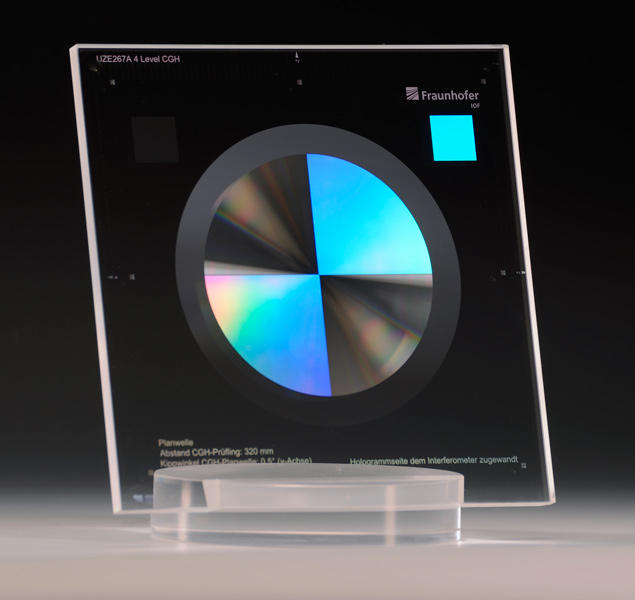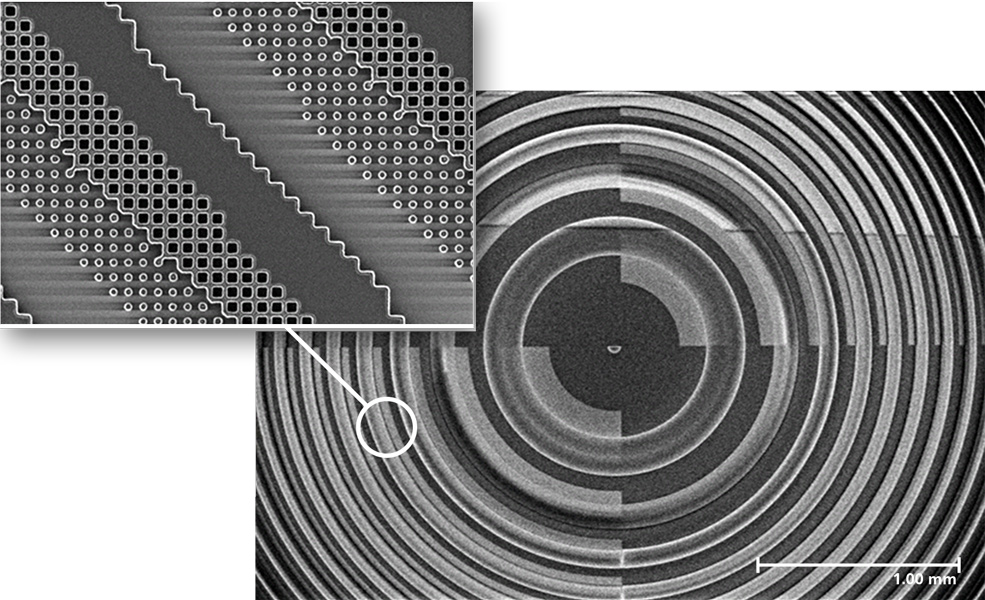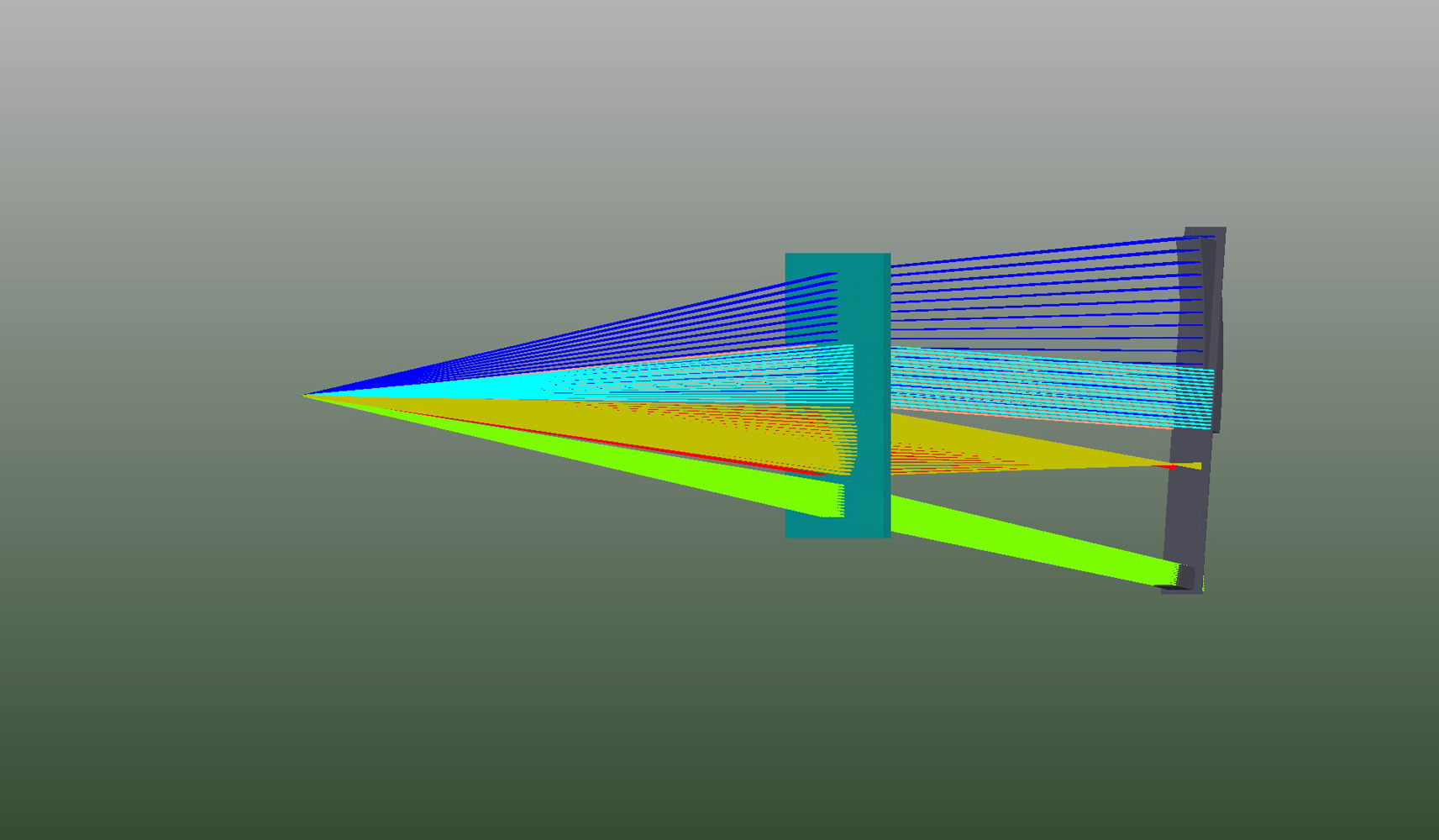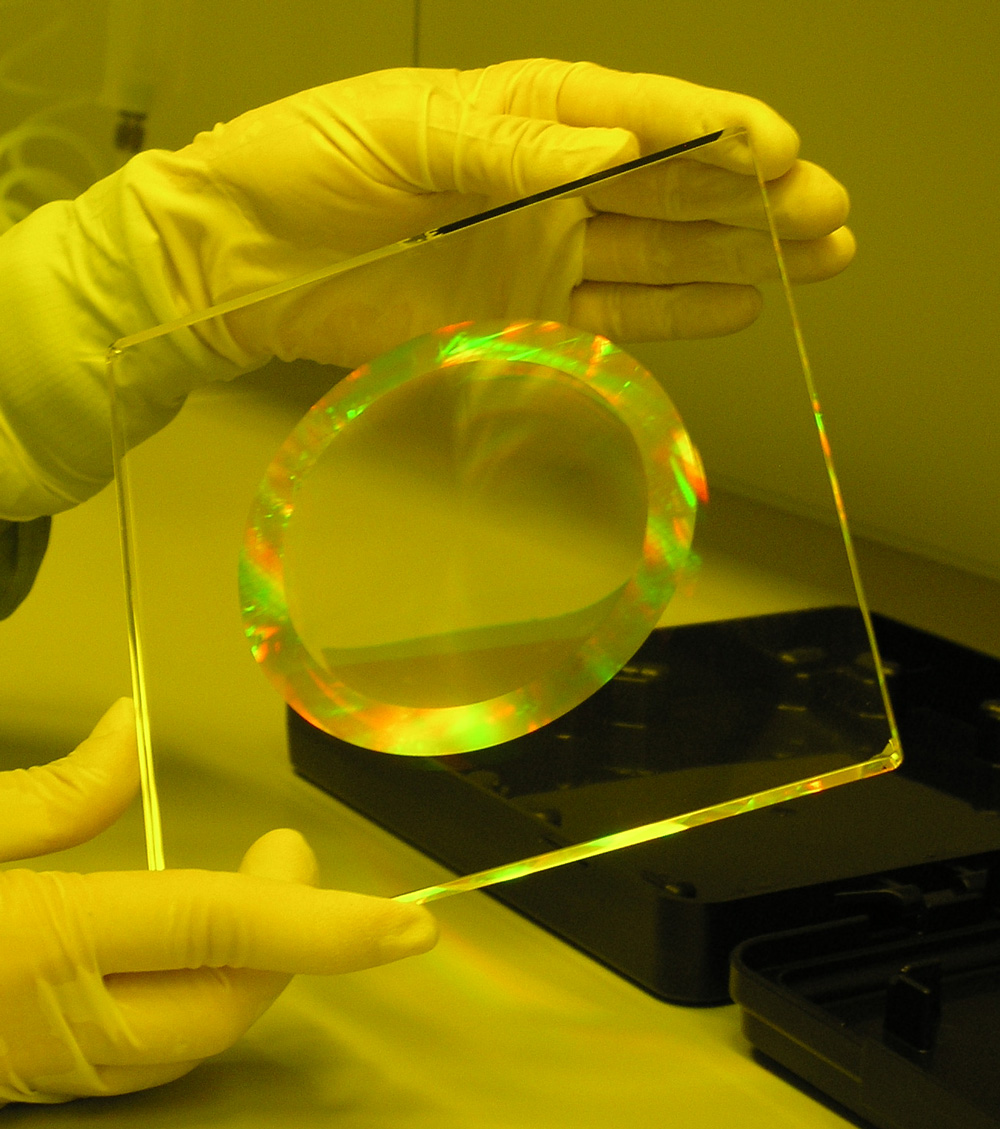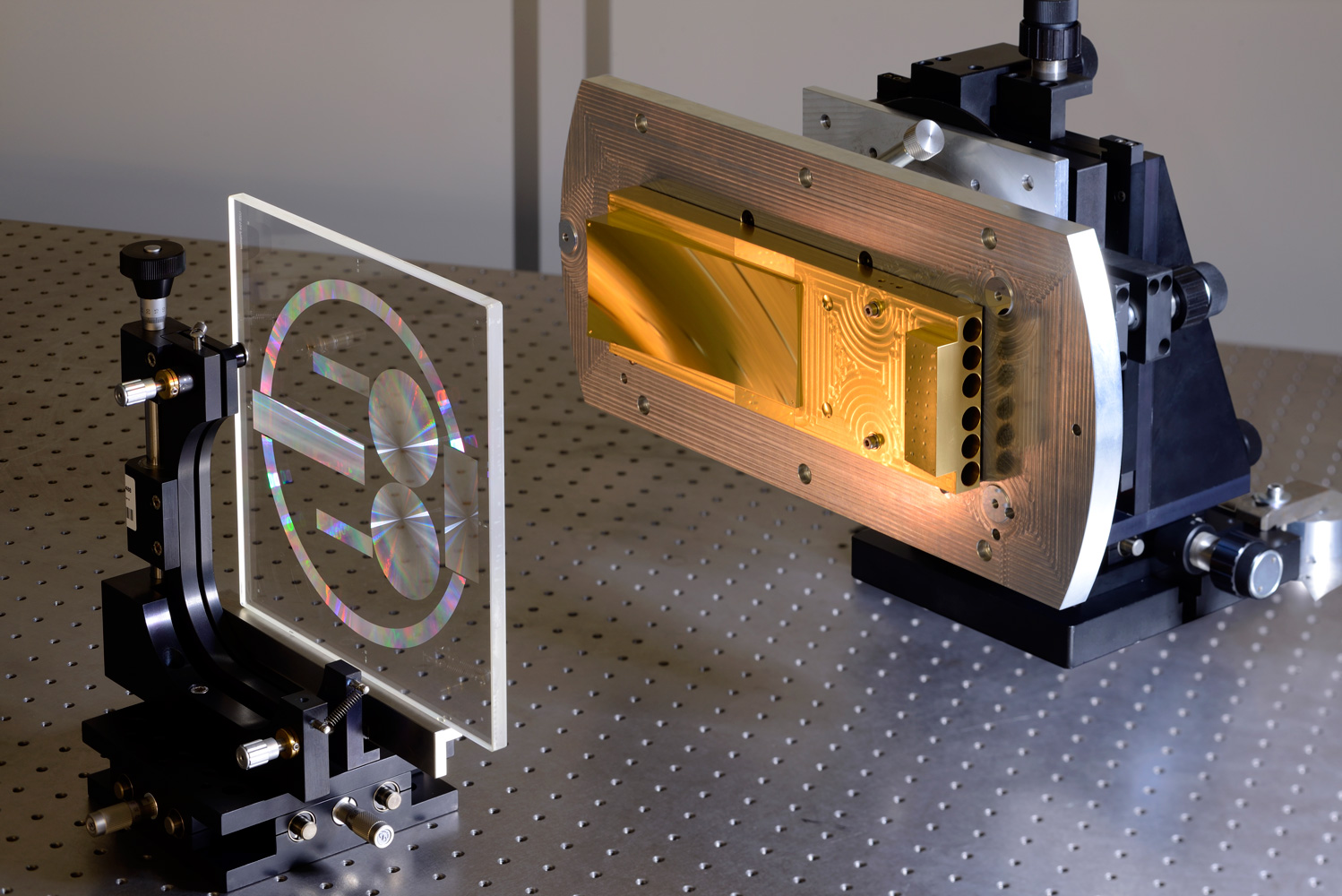Asphere-Test-CGH based on Effective-Index Structures
Testing of spherical optics is typically performed using interferometric methods. During such a measurement, the surface being tested is illuminated with a spherical wave and deviations of the surface shape from this wave can be characterized by superposition of the reflected light with a reference wave. In recent years, aspherical and freeform optical surfaces have gained increasing importance for the realization of optical systems. For their characterization, the above-mentioned method is no longer suitable as the surface shape inherently deviates from a sphere and no useful information can be extracted from the interfero-metric measurement. In such cases, the use of computer generated holograms (CGH) for adapting the interferometric illumination wave specifically to the optics being tested has been an established method for a long time. Thus, these CGHs represent a ruler for the aspherical surface.The light deflecting structure of CGHs typically consist of a binary grating with locally varying period. Such patterns achieve a diffraction efficiency in the range of 40 %, resulting in an overall light portion of only 16 %, usable for the measurement as the light passes the element twice. The unused light remains in the beam path of the interferometer and can thus interfere with the measurement, or even make it impossible. Higher diffraction efficiencies are achievable e.g. by micro-structures comprising a larger number of height levels (e.g. 4-level elements). Their lithographic realization, however, requires a significantly higher effort and the typical fabrication tolerances are reducing the wave-front accuracy of the CGH.

